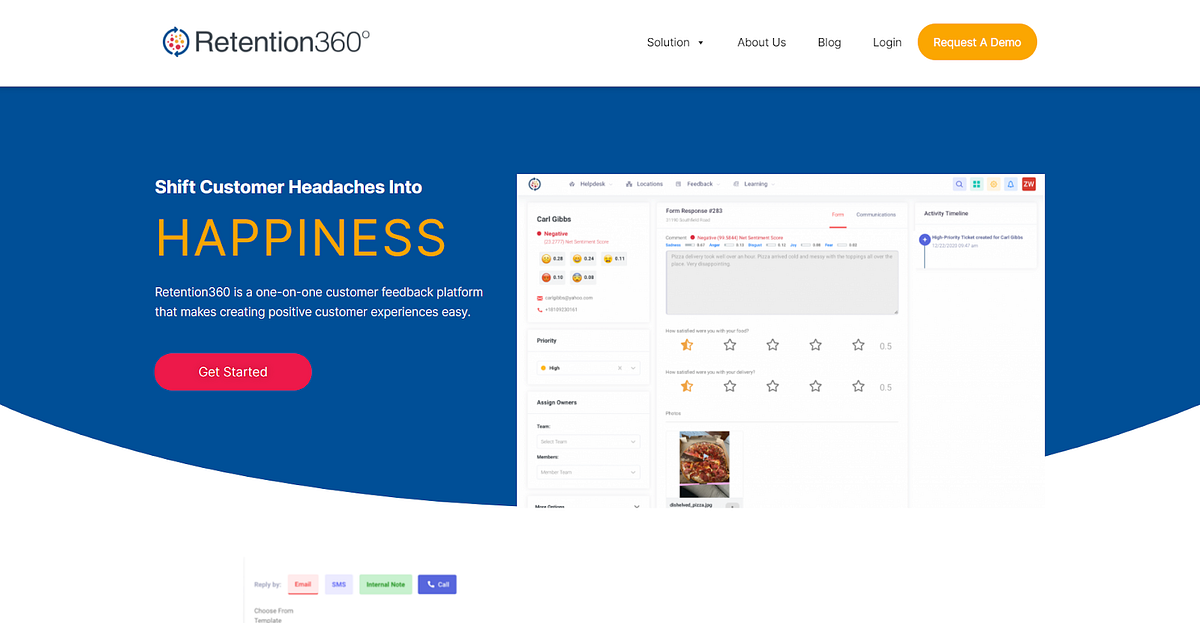
There are a number of effective ways to promote your business and reach a wider audience. You can market your business through advertisements, social media posts, or even billboards!
If you’re looking for a way to market your business and engage with customers on a deeper level, however, then customer engagement is key.
Customer engagement is the process of building a relationship with your customers. It’s about creating a connection that goes beyond the transaction. When done right, it can result in customers that are both loyal and passionate advocates for your brand.
Aside from that, customer engagement is one of the most pressing issues for marketers because of its capability to drive conversions, boost customer retention, and increase customer lifetime value.
How do you make sure your business stands out from the rest and keep your customers engaged? In this article, we’ll discuss customer engagement secrets and three tips to improve customer engagement for your business.
What Is Customer Engagement?

Customer engagement refers to all the methods you use to make sure your audience is interacting with your brand. The process is a two-way street — not only do you want to make sure that your customers are engaged with you, you also need to be engaging with them. This means that your customers must be at the forefront of your mind when you’re making decisions about your brand, as they should be the ones you’re trying to please.
Engagement can be difficult to quantify, but you know it when you see it. Good customer engagement leads to customers who are passionate and will promote your brand. They’re also more likely to continue doing business with you and to recommend you to others.
Tips to Skyrocket Your Customer Engagement
Transparency
Transparency is essential for customer engagement. You want your customers to feel like they can trust you and that you have their best interests at heart. If they don’t trust you, they’re not going to engage with you.
For instance, if you’re operating a seafood restaurant, you want people to know that your seafood is fresh and sustainable. That way, they can be confident in their choice of dining at your establishment. In addition, they’ll be confident knowing that your food is free from harmful chemicals and pollutants.
Transparency is not only about being upfront with customers, but it’s also about responding to their questions and concerns. For example, if a customer leaves a negative review, don’t just ignore it — respond and let them know that you’re taking steps to improve.
Personalization
People appreciate feeling like they matter, and one way to do that is through personalization. There are a few ways you can personalize the customer experience.
One way to effectively do this is to leverage client data to deliver a more tailored experience. For instance, if you have a customer’s purchasing history, you may offer suggestions based on what they’ve previously purchased.
Customer segmentation is another method for personalizing the customer experience. This is when you group clients together based on similarities in their needs, wants, or behavior. After that, you may design unique experiences for each group. For example, if you have a group of high-value consumers, you may treat them like VIPs by providing them with exclusive offers and personalized service.
Customer Retention
One surefire way to increase your customer engagement is to consider customer retention. This refers to the ability of a company to keep its customers over time. There are a few ways to do this, but below are three key strategies:
- Make sure your customers are satisfied with your product or service. They won’t have much reason to stay if they aren’t.
- Create a brand that customers can connect with. If they feel like they’re part of your community, they’re more likely to stick around.
- Make it easy for customers to do business with you. If they have a positive experience, they’re more likely to come back.
For instance, if you constantly send your customers promotional emails, they might get annoyed and unsubscribe. On the other hand, if you send them helpful content that applies to their interests, they’re more likely to engage with you.
If you do not know how to begin your customer retention process, you can rely on a tool that does the job. Retention360 is a platform that you can trust with these things.

This platform is designed to help you focus on two key areas: customer success and churn prevention. Using Retention360 provides many helpful benefits, such as bridging the communication gap between you and your customers, enhancing client satisfaction, and reducing customer churn.
Aside from that, Retention360 offers a direct response tool that you can use for customer engagement. This tool allows you to send automated messages to customers who haven’t interacted with you in a while. If you’re interested, you can request a demo and see how it works.
Factors to Consider When Making a Customer Engagement Plan
Now that you’re aware of the tips you can use to increase customer engagement, it’s time to create a plan that will work for your business. But before you do, there are a few factors you need to take into account.
The Type of Business You Have
There are three primary types of businesses: service businesses, product businesses, and e-commerce businesses. Determining which type your business falls into can help you identify what to include in your customer engagement plan and how to go about it.
If you run a service business, your customers are likely to be highly engaged because they need to use your services regularly. This could include businesses such as gyms, hair salons, or restaurants. For service businesses, customer loyalty and repeat business are key, so your customer engagement plan should focus on keeping your customers happy and satisfied.
If you have a product business, your customers are likely to be less engaged because they only need to purchase your products occasionally. This could include businesses such as grocery stores, clothing stores, or home improvement stores.
For product businesses, customer acquisition is key, so your customer engagement plan should focus on attracting new customers and getting them to purchase your products. You can achieve this by creating incentives for them to visit your store or website, providing helpful content that showcases the benefits of buying from you, and offering engaging social media campaigns.
If you have an ecommerce business, your customers are likely to be in the middle of the spectrum when it comes to engagement. This could include businesses such as online retailers, subscription services, or food delivery services. For ecommerce businesses, customer retention is key, so your customer engagement plan should focus on keeping your customers happy and keeping them coming back.
The Products or Services You Offer
To ensure that your products or services reach the right target market, you need to carefully plan your marketing strategy and track customer engagement data. This will give you a better understanding of how customers interact with your brand.. You can use this information to improve your customer engagement strategy.
For example, if you’re selling organic bath soaps, you might engage with your customers through social media platforms like Twitter or Instagram. You can use these platforms to show off your product, post customer reviews, and even run giveaways. Additionally, you can give away PR kits to bloggers and vloggers who can promote your products on their channels.
Your Target Audience
One of the most important steps in establishing a business is knowing your target audience. The same goes for making your customer engagement plan. If you don’t have a specific target audience in mind, you’ll only be wasting your time and effort. Moreover, you’ll be bombarding everyone with content that not everyone will be interested in.
To know who your audience is, consider the following questions:
- Who are you selling to?
- What are their demographics?
- What do they like?
- What do they need?
- What are their pain points?
- How can you help them?
Once you know who your target audience is, making a customer engagement plan will be a breeze.
Your Goals
The next step in increasing customer engagement is to identify your objectives and goals. What do you hope to achieve by increasing customer engagement? Do you want to increase brand awareness, build customer loyalty, or boost sales? Once you know your goals, you can determine the best strategies to achieve them.
Your Brand Voice
Your brand voice is how you communicate with your target audience. It’s the overall tone of your content, whether it’s serious or lighthearted. It’s also the way you address your audience — are you speaking to them as friends or as customers?
Consistency is key when it comes to your brand voice. Make sure it’s the same across all channels, from your website to your social media accounts. This will help your target audience easily recognize you and your content.
Final Thoughts
Customer engagement is a critical element of success for businesses, particularly startups. By engaging with your customers, you can better understand what they want and how they want it. This can lead to more customers and more revenue, as well as more satisfied consumers.









